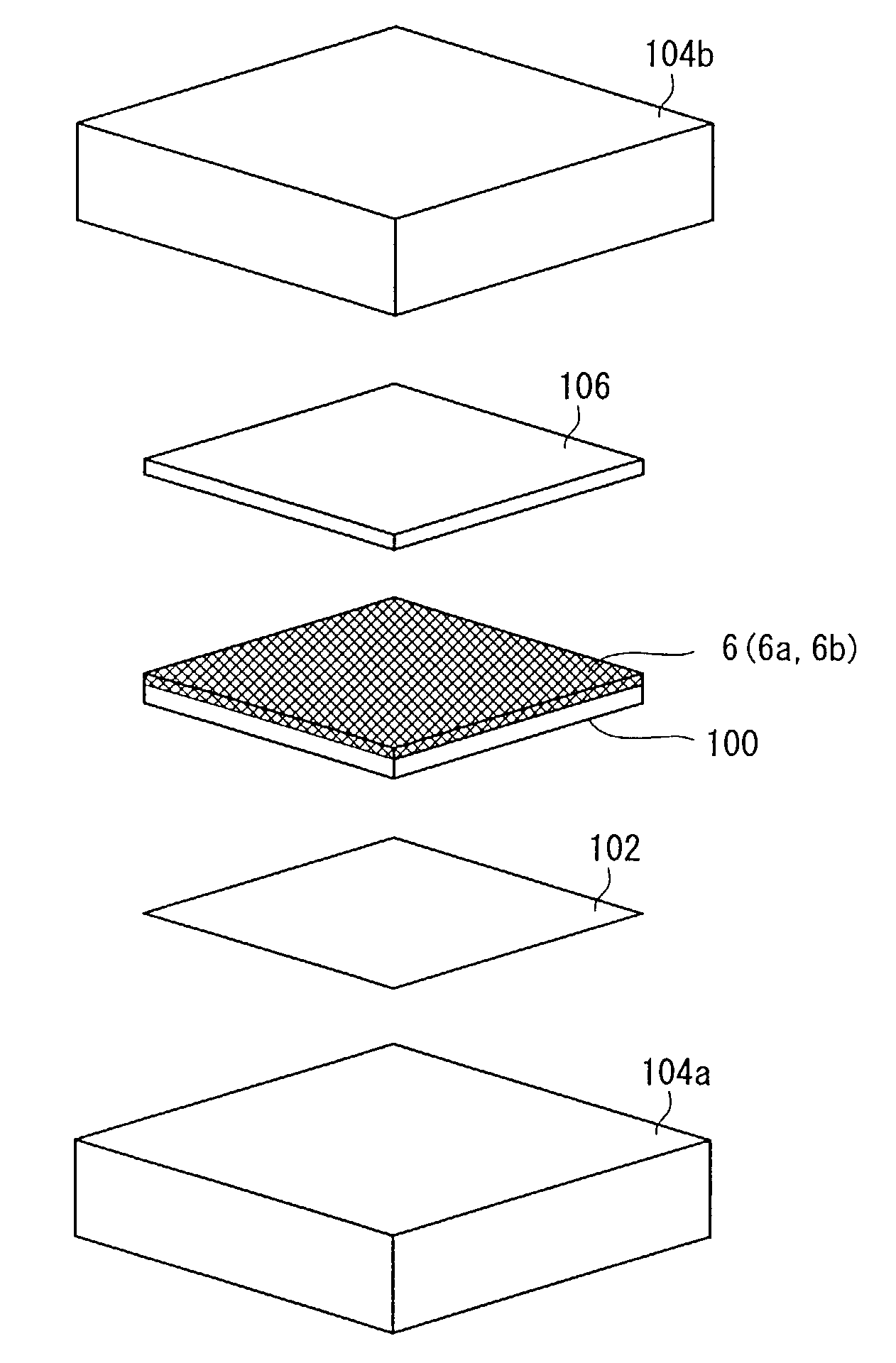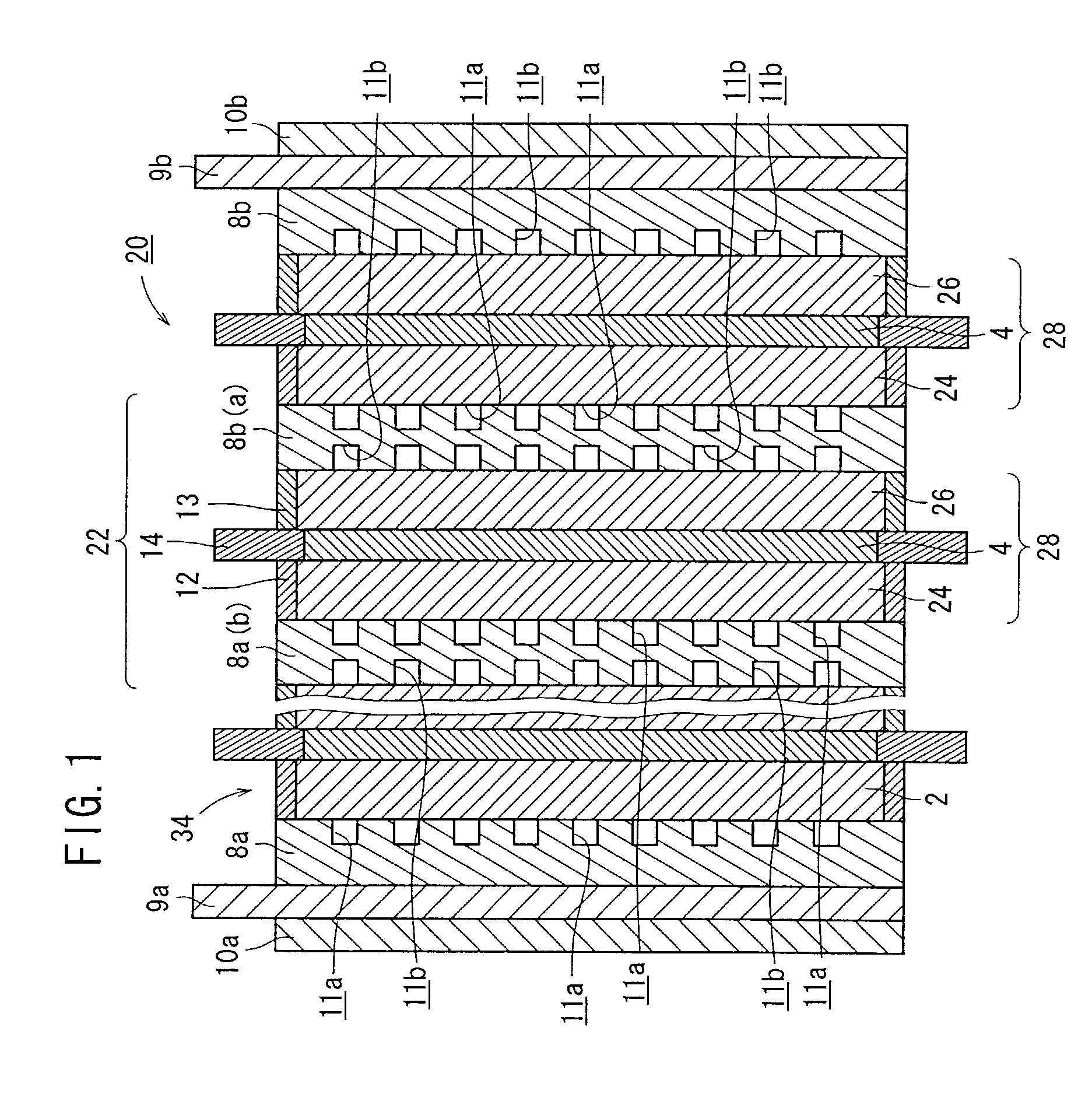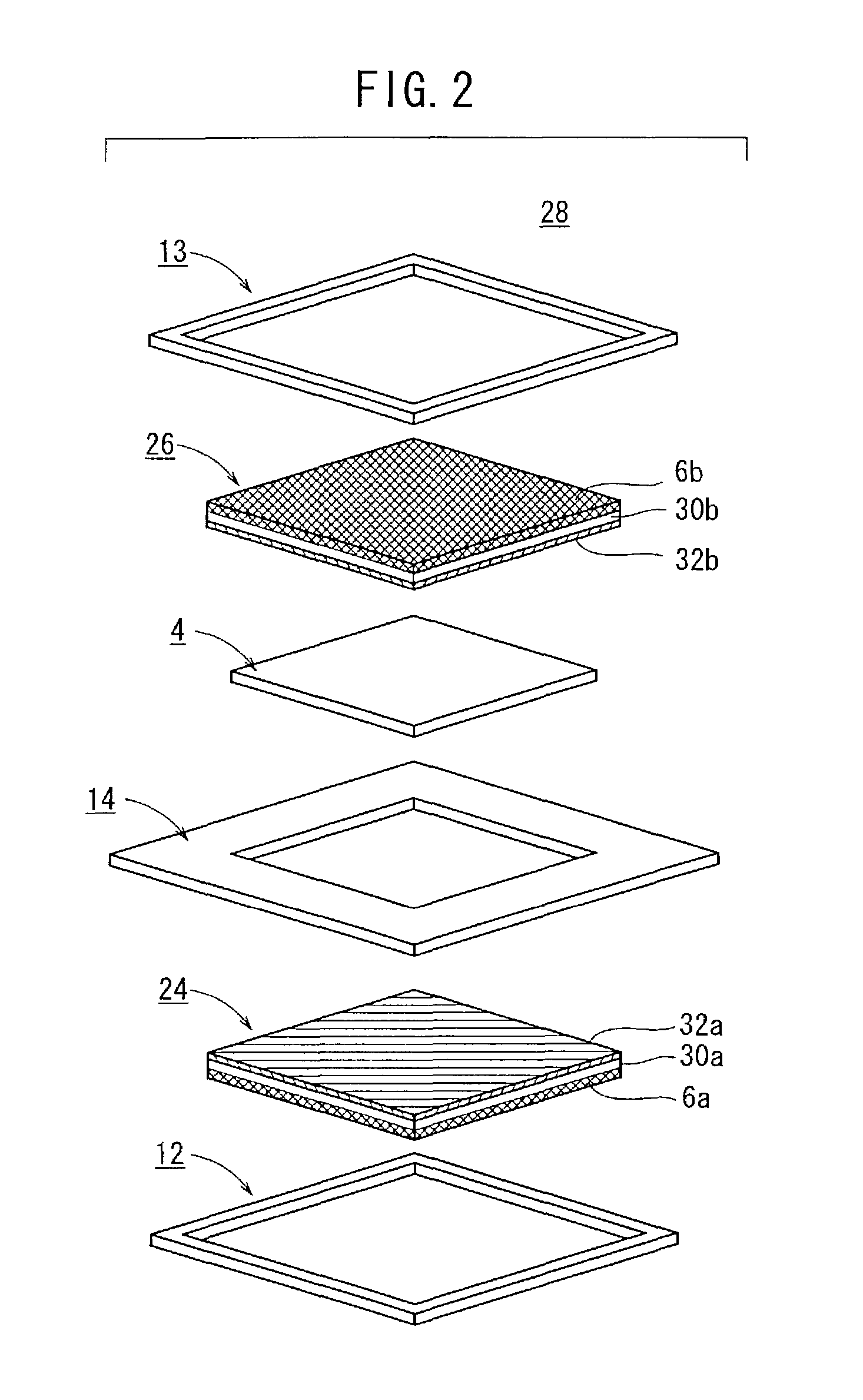Electrode for fuel cell, method of manufacturing same, and fuel cell with such electrode
- Summary
- Abstract
- Description
- Claims
- Application Information
AI Technical Summary
Benefits of technology
Problems solved by technology
Method used
Image
Examples
examples
(1) Production of Fuel Cells 20:
[0109]60.6 weight % of PTFE particles having a diameter ranging from 200 to 300 nm, 5 weight % of a surface active agent, and 34.4 weight % of pure water were mixed into a PTFE dispersion. 49.5 parts by weight of the PTFE dispersion, 70 parts by weight of carbon particles having a diameter ranging from 10 to 30 nm, and 840 parts by weight of a solvent of ethylene glycol (the boiling point is 197° C.) were mixed, by stirring, into a first paste 100.
[0110]The first paste 100 was coated on a sheet of carbon paper (manufactured by Toray) having a length of 60 mm, a width of 60 mm, and a thickness of 270 μm according to the screen printing process. Thereafter, the coated sheet was heated at 350° C. for 20 minutes to dry the first paste 100, producing a first layer composed of 0.9 mg of carbon particles and 0.39 mg of PTFE particles that were dispersed per 1 cm2 of carbon paper.
[0111]Then, the first layer was coated again with the first paste 100 according ...
PUM
| Property | Measurement | Unit |
|---|---|---|
| Fraction | aaaaa | aaaaa |
| Thickness | aaaaa | aaaaa |
| Temperature | aaaaa | aaaaa |
Abstract
Description
Claims
Application Information
 Login to View More
Login to View More - R&D
- Intellectual Property
- Life Sciences
- Materials
- Tech Scout
- Unparalleled Data Quality
- Higher Quality Content
- 60% Fewer Hallucinations
Browse by: Latest US Patents, China's latest patents, Technical Efficacy Thesaurus, Application Domain, Technology Topic, Popular Technical Reports.
© 2025 PatSnap. All rights reserved.Legal|Privacy policy|Modern Slavery Act Transparency Statement|Sitemap|About US| Contact US: help@patsnap.com



